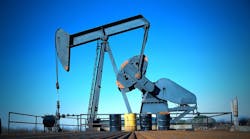Sam Fletcher
OGJ Senior Writer
US President Barack Obama and members of his administration again talked of dipping into the US Strategic Petroleum Reserve as energy prices climbed June 8 after ministers of the Organization of Petroleum Exporting Countries failed to change production at an acrimonious meeting in Vienna.
Obama was quoted by the Huffington Post as saying, “My general view has been that [SPR] is to be used when you don't have just short-term fluctuations in the market, but where you have a disruption…. Libya has taken 125 million bbl off the market.”
Actually some 1.5 million b/d of Libyan production—1.8% of global supply—has been shut in since February when armed rebellion erupted against strongman Moammar Gadhafi, said analysts at FBR Capital Markets & Co., Arlington, Va.
They noted the administration in March expressed its willingness to tap into SPR if high oil prices threatened US economic recovery. SPR holds some 727 million bbl of crude, with a maximum drawdown capability of 4.4 million b/d. It would take 13 days to bring that oil to market, FBR Capital analysts said.
However, they cautioned, “SPR is a limited tool. Major sales from the SPR have occurred only twice since it was created: after Hurricane Katrina in 2005 and after Iraq's 1990 invasion of Kuwait. Despite frequent calls…to deploy the SPR to manage high prices, presidents have historically been very reluctant to draw down the SPR without a physical disruption in the US' ability to acquire needed oil.”
Last resort
That’s because SPR was established as a supply of last resort in the event of an emergency disruption of usual sources of crude. The Energy Policy and Conservation Act only allows a withdrawal if the “president has found drawdown and sale are required by a severe energy supply interruption or by obligations of the US under the international energy program.” The 28-member International Energy Agency in Paris coordinates 1.5 billion bbl of national inventories in developed nations, including the US.
Moreover, analysts said, “A drawdown reduces the country's ability to mitigate disruptions, potentially increasing the risk premium commanded for crude.”
However, the law gives the president broad discretion as to what constitutes a severe interruption, including a supply reduction of “significant scope and duration” resulting in a severe increase in price that is likely to adversely affect the national economy. “Previous administrations have provided loans of crude to refiners to mitigate disruptions following hurricanes, ship channel closures, or unusual weather,” the analysts said.
Nonetheless, Reuters news service reported the Obama administration may be just “one price-spike away” from tapping SPR as political pressure mounts over higher retail pump prices for gasoline. In the long run, Obama told the Huffington Post, “Sustainable price relief could only come through expanded production of domestic oil, conservation, and renewables.”
Ironically, last year’s “Obamatorium” against drilling the deep waters of the Gulf of Mexico and the Department of the Interior’s continued slow pace in issuing drilling permits have diminished domestic exploration and development. The resulting crunch between depleting US supplies and increased demand will be more evident in 2012 as Obama seeks reelection. The languishing US economy is the primary political issue at present, and the high cost of energy is a focal point for disgruntled voters.
“Further escalation from the current $100/bbl level and signs of a long-term supply disruption would likely seal the deal as pressure mounts from Democrats including Jeff Bingaman, chairman of the Senate Energy and Natural Resources Committee, and his colleague Jay Rockefeller,” FBR Capital analysts said.
Guy Caruso, who headed the Energy Information Administration in 2005 when President George W. Bush sold oil from the SPR after Hurricane Katrina, told Reuters, “It would be difficult for the [Obama] administration to stand by and watch gasoline go up another 25-35¢.” Tapping SPR might bring the price of oil down $5-10/bbl and reduce retail gasoline prices by 24¢/gal, he surmised.
(Online June 13, 2011; author’s e-mail: [email protected])

